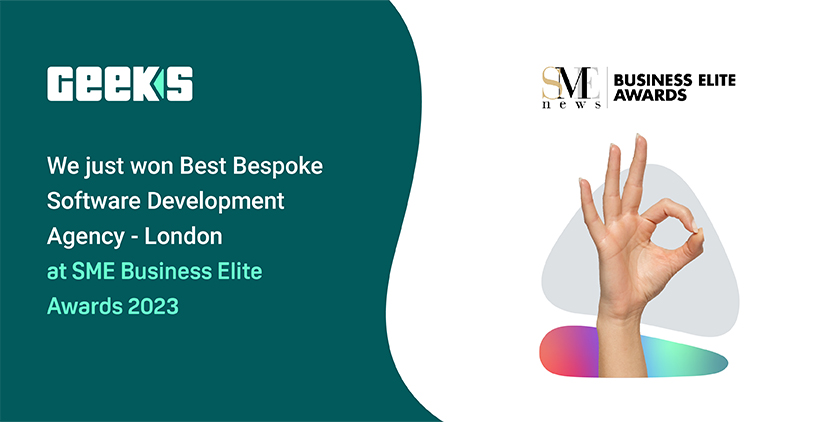In a recession, does your business operating model affect your digital transformation?
When times are good, businesses may not be as concerned about being market leaders. A market leader position, however, can ensure not only survival but also growth during difficult times, such as recessions.
Roger Martin-Fagg, our guest in The Innovation Room Episode 18, A Finger To Recession, says that a recession is like a spring cleaning for businesses. You may be wiped out by the recession if your business isn't sound (strong strategy, execution, culture etc).
Difficult times amplify the need for greater discipline
While in good economic times (e.g. the post-pandemic surge) businesses might grow regardless of how good they are, it is the difficult times that separate the great businesses from the rest.
Have you wondered about questions like: “How did Nike, a start-up company, manage to run past Adidas?” or “Why did Apple take over the market the way they did?”, “Why Four Seasons is the leader for excellent customer experience in hospitality”? Throughout good and bad economic times, they have mastered the art of being market leaders.
In Episode 19 of The Innovation Room, Market Leaders: Dare or Die we examined a strong theory explaining how market leaders make it and stay there. We looked at the three value discipline models and how they help a business position itself as a market leader. There is also a good article in HBR, here, if you want to get into more detail about this theory.
In essence, the theory states that to stand out, you must excel in one of the three value disciplines and maintain acceptable levels in the other two. For reference, here is a summary:
Client Intimacy
This is understanding your clients' needs so deeply that you predict their needs before they do, and provide them with the total best solution to their needs. The model is based on tailoring the business offerings to match exactly what the client needs. It requires combining detailed customer knowledge with operational flexibility so the business can respond quickly to almost any need that their clients have. Home Depot, is an example.
Operational Excellence
This is based on reliable products/services at competitive prices, delivered with minimal difficulty or inconvenience. Dell, for instance, is a master of operational excellence. There is close to no customisation based on individual client needs. They will be able to choose based on the pre-defined options, but they will get them reliably, fast, and cheaper than in other places.
Product Leadership
This is focusing on defining and inventing what the clients need. In other words, it is constantly making competitors' products or services obsolete. Apple has been the leading example of this model for many years. The clients know the business for giving innovative and cutting-edge products/services, and they know they are paying a premium price for it, and they might have to wait for a while to get it.
How does it impact Digital Transformation?
There are, of course, the same principles that guide successful digital transformation (Assess, Align, Act, and Repeat. Check DiGence for more details). In theory, your business model should not affect your approach to digital transformation and innovation. But taking a closer look at how digital transformation strategy forms, it’s clear that the more disciplined a business is the more distinct its digital transformation strategy looks.
There are three buckets in the digital transformation roadmap:
-
BAU (Business as usual) is the bucket for initiatives that keeps the business technology ecosystem performing well and steadily. Initiatives like Pen testing, performance optimisation, Tech stack upgrade…
-
Growth is the bucket that is driven by external demands on the business and will help the business grow. Initiatives will launch a new feature to a bespoke customer portal that gives the customers more visibility on their engagement with the business. Or updating a bespoke system to handle a newly introduced regulation to allow the business access bigger market (think Brexit).
-
R&D (research and development) is the bucket to push boundaries to try new ideas that the business is not 100% sure will succeed. Or adopt a new emerging technology and find a way to add value to the clients using that.
If a business is not disciplined enough, its digital transformation roadmap has no clear intention on how the three buckets of the roadmap (BAU, Growth, R&D) are formed.
The size of these buckets in a digital transformation roadmap varies for each business. Even for the same business, the size can vary from time to time. But largely, they are a factor of the market the businesses are in, the risk appetite of business leaders, the risk appetite of their investors, and the culture of the business.
However, what goes into each bucket will depend on what is the focus of the operational model of the business and how disciplined the business is in sticking to one discipline, if any.
Client Intimacy
Here the focus of the software technology initiatives (regardless of the bucket of the roadmap) needs to be on understanding the clients, and their needs and creating maximum flexibility for the offering of the services or products.
For example, a super-intelligent Account Management System should be on the roadmap. Also, A knowledge Share System empowers the team to be able to make decisions that are best for the client based on the collective intelligence of the business.
Operational Excellence
Here the focus of software technology adoption should be on driving efficiency and ease of use of the services/products. For example, an AI-driven Pricing System enables the business to provide the next best prices if they deal with large volumes of products. A frictionless Customer Portal where the customers will be able to navigate and find what they need, better than if humans were involved, is another key example in this model.
Product Leadership
Here the focus is to be able to test many different ideas and choose what works best. So an example of software technology adoption can be an Idea Management System where the business can keep track of the ideas from the whole business (and even outside the business, maybe from its customers) and be able to implement the best ones and learn lessons from the ones that weren’t successful.
For changemakers, morphing their companies into what’s next, the recession is just “another barrier to break through”. They know “how we’ve always done it” isn’t good enough. They are ready to rethink that thinking constantly. They are the ones creating businesses that become market leaders even in a recession.
For deeper clarity on how these three models impact your business growth, tune into Episode 19 of The Innovation Room - Market Leaders: Dare or Die with our guest Kate Fletcher, CEO Mentor, Advisor & Catalyst- who sheds light on how businesses can achieve stability and beat recession.










